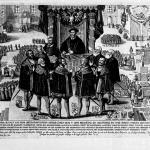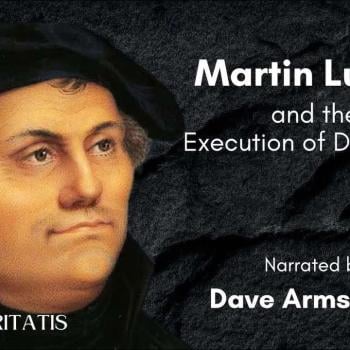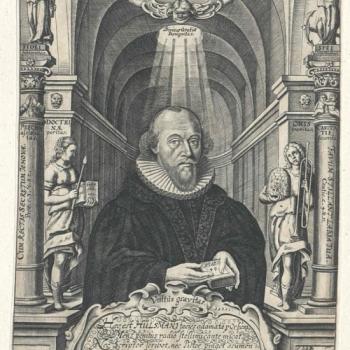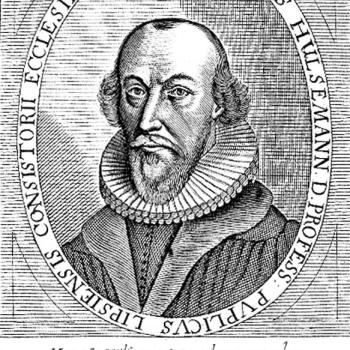“Please Hit ‘Subscribe’”! If you have received benefit from this or any of my other 4,600+ articles, please follow this blog by signing up (w your email address) on the sidebar to the right (you may have to scroll down a bit), above where there is an icon bar, “Sign Me Up!”: to receive notice when I post a new blog article. This is the equivalent of subscribing to a YouTube channel. Please also consider following me on Twitter / X and purchasing one or more of my 55 books. All of this helps me get more exposure, and (however little!) more income for my full-time apologetics work. Thanks so much and happy reading!
***
Christian Classics Ethereal Library is a wonderful online source for many historic Christian documents. Laura de Jong, a staff writer there, wrote about this subject matter [my links and bracketed comments added]:
The Augsburg Confession is available online as part of the Book of Concord, as is the The Apology of the Augsburg Confession, and the Confutatio [link one (my own source used) / link two]. Wikipedia (“Augsburg Confession”) provides some historical background for these theological disputes:
The Augsburg Confession, also known as the Augustan Confession or the Augustana from its Latin name, Confessio Augustana, is the primary confession of faith of the Lutheran Church and one of the most important documents of the Protestant Reformation. The Augsburg Confession was written in both German and Latin and was presented by a number of German rulers and free-cities at the Diet of Augsburg on 25 June 1530. . . .
The Augsburg Confession became the primary confessional document for the Lutheran movement, even without the contribution of Martin Luther. Following the public reading of the Augsburg Confession in June 1530, the expected response by Charles V and the Vatican representatives at the Diet of Augsburg was not immediately forthcoming. Following debate between the court of Charles V and the Vatican representatives, the official response known as the Pontifical Confutation of the Augsburg Confession was produced to the Diet, though the document was so poorly prepared that the document was never published for widespread distribution, nor presented to the Lutherans at the Diet.
In September, Charles V declared the response to be sufficient and gave the Lutheran princes until 15 April 1531 to respond to the demands of the Confutation. In response, Philip Melanchthon wrote a lengthy and sustained argument both supporting the Augsburg Confession and refuting the arguments made in the Confutation. This document became known as the Apology of the Augsburg Confession and was soon translated into German and was widely distributed and read throughout Germany.
I thought it would be interesting and instructive to present excerpts of the Augsburg Confession, followed by the Catholic replies in the Confutatio Pontificia, in turn followed by Melanchthon’s counter-replies in The Apology of the Augsburg Confession, with my own further counter-rebuttals (if I have anything else to add). This would allow readers to follow the reasoning back-and-forth and to make up their own minds, as to which viewpoint has more biblical and patristic support. Catholics at the time offered no further rebuttal to Melanchthon’s counter-reply until the Council of Trent.
For a critical Catholic take on these early Lutheran “ecumenical” [?] efforts, see my articles:
*
Practical Matters: Perhaps some of my 4,600+ free online articles (the most comprehensive “one-stop” Catholic apologetics site) or fifty-five books have helped you (by God’s grace) to decide to become Catholic or to return to the Church, or better understand some doctrines and why we believe them.
Or you may believe my work is worthy to support for the purpose of apologetics and evangelism in general. If so, please seriously consider a much-needed financial contribution. I’m always in need of more funds: especially monthly support. “The laborer is worthy of his wages” (1 Tim 5:18, NKJV). 1 December 2021 was my 20th anniversary as a full-time Catholic apologist, and February 2022 marked the 25th anniversary of my blog.
PayPal donations are the easiest: just send to my email address: [email protected]. Here’s also a second page to get to PayPal. You’ll see the term “Catholic Used Book Service”, which is my old side-business. To learn about the different methods of contributing (including Zelle), see my page: About Catholic Apologist Dave Armstrong / Donation Information. Thanks a million from the bottom of my heart!
*
***
Photo credit: Confutatio Augustana and Confessio Augustana presented to Holy Roman Emperor Charles V in 1530; Catholic and Lutheran sides presenting documents at the Diet of Augsburg (1 January 1881). [public domain / original source / Wikimedia Commons]
Summary: Catholic-Protestant “dialogue”: based on the Augsburg Confession (Lutheran, 1530), Catholic replies (then and now), & Lutheran Philip Melanchthon’s counter-reply.














